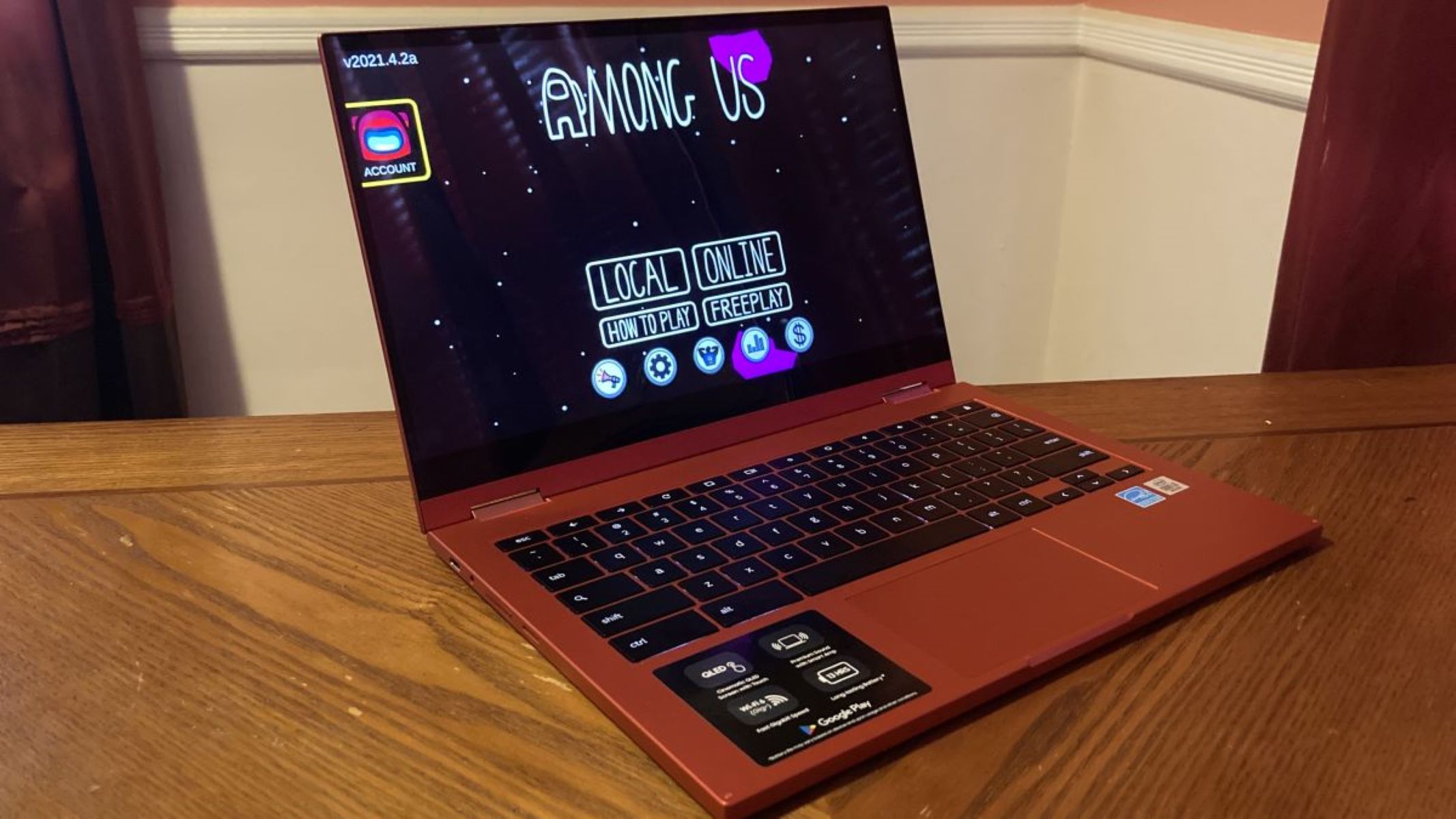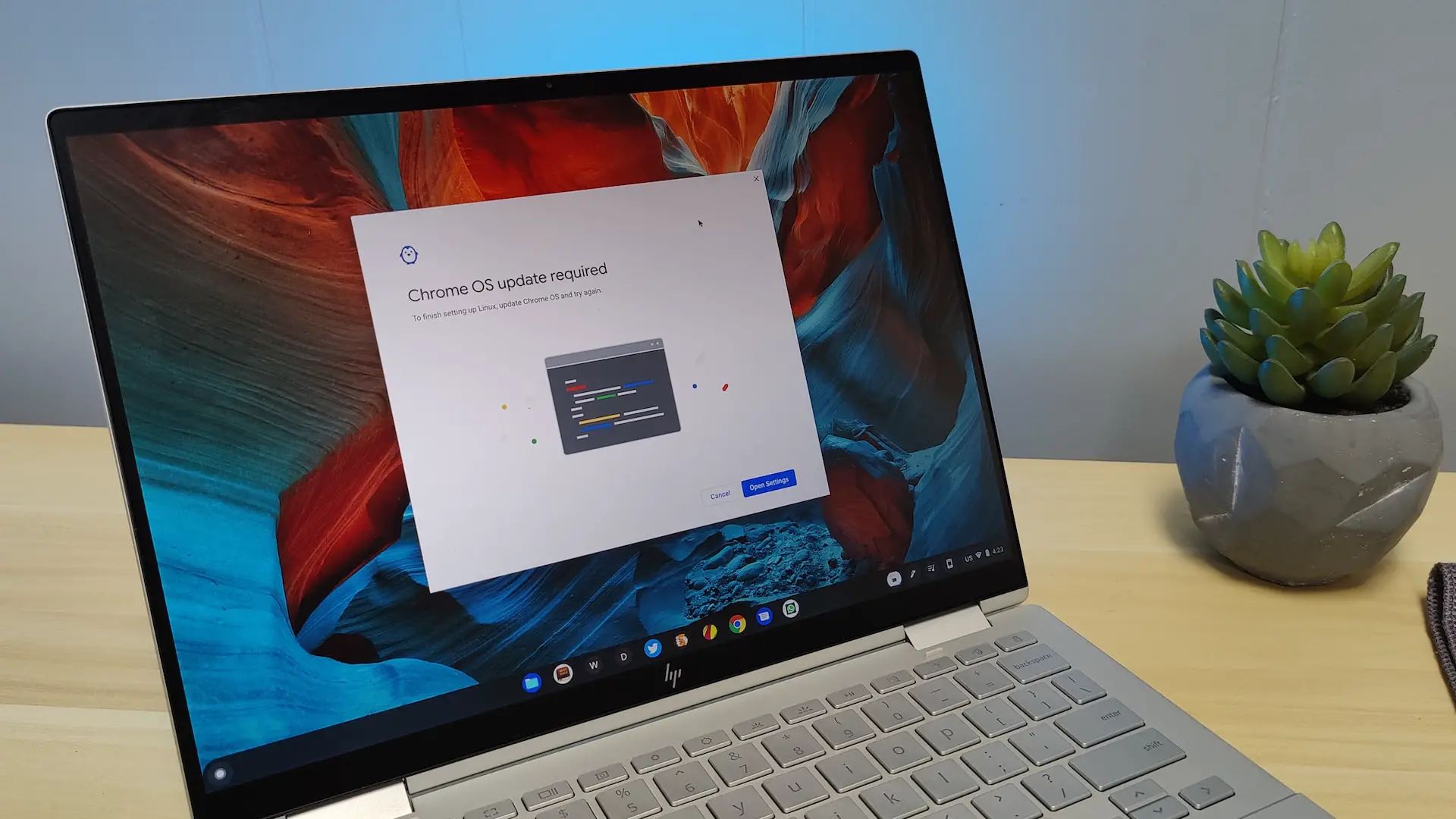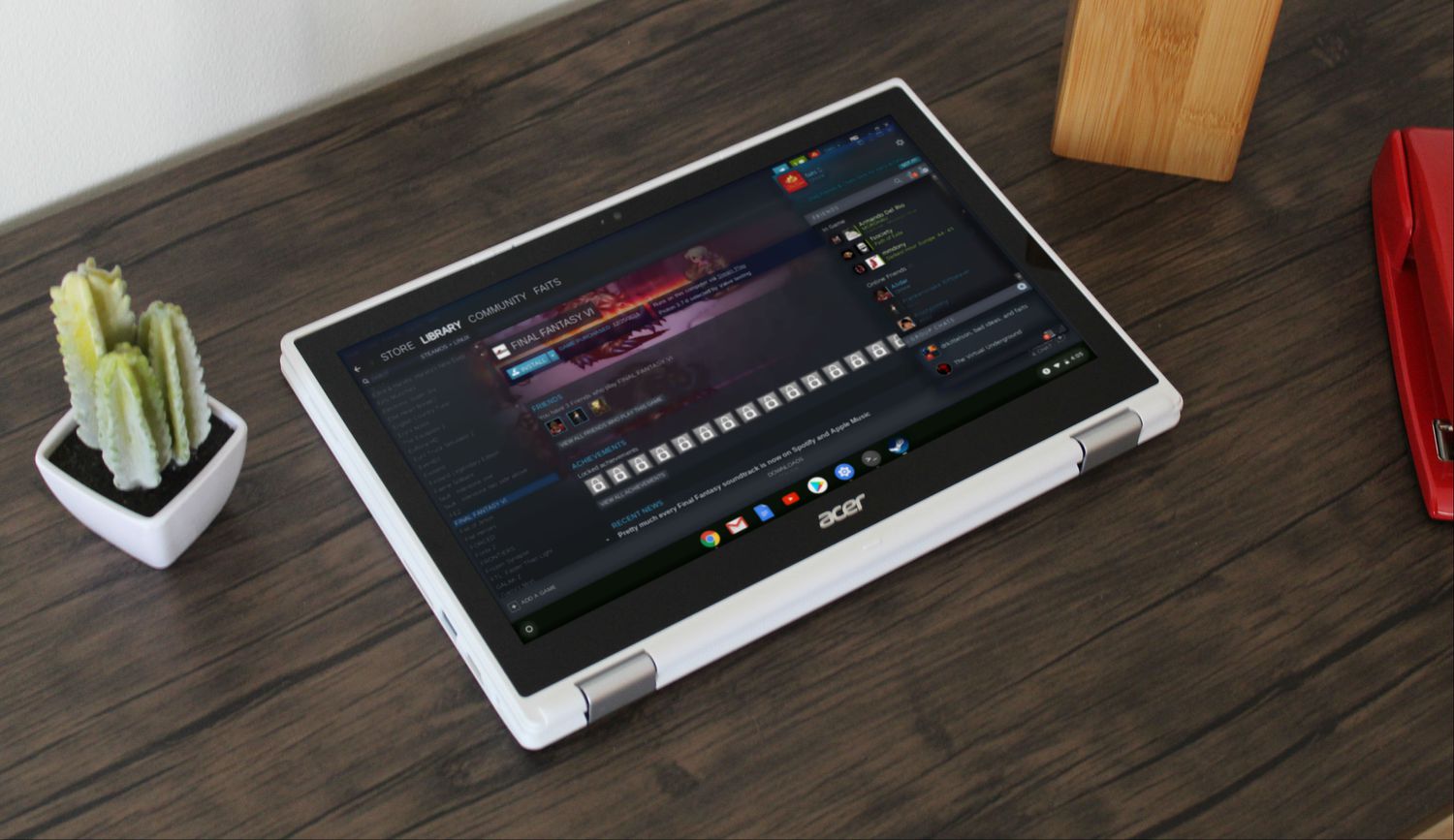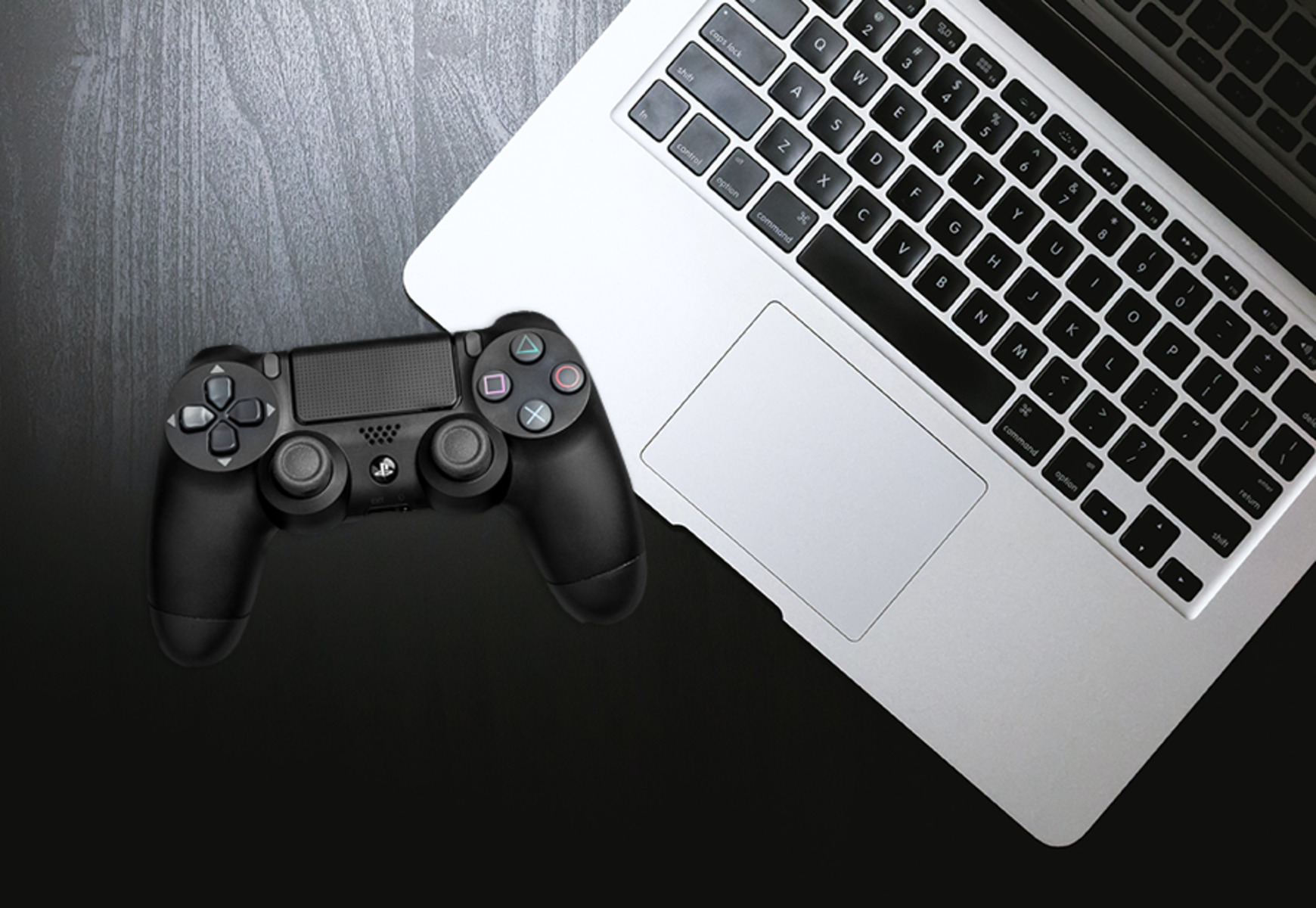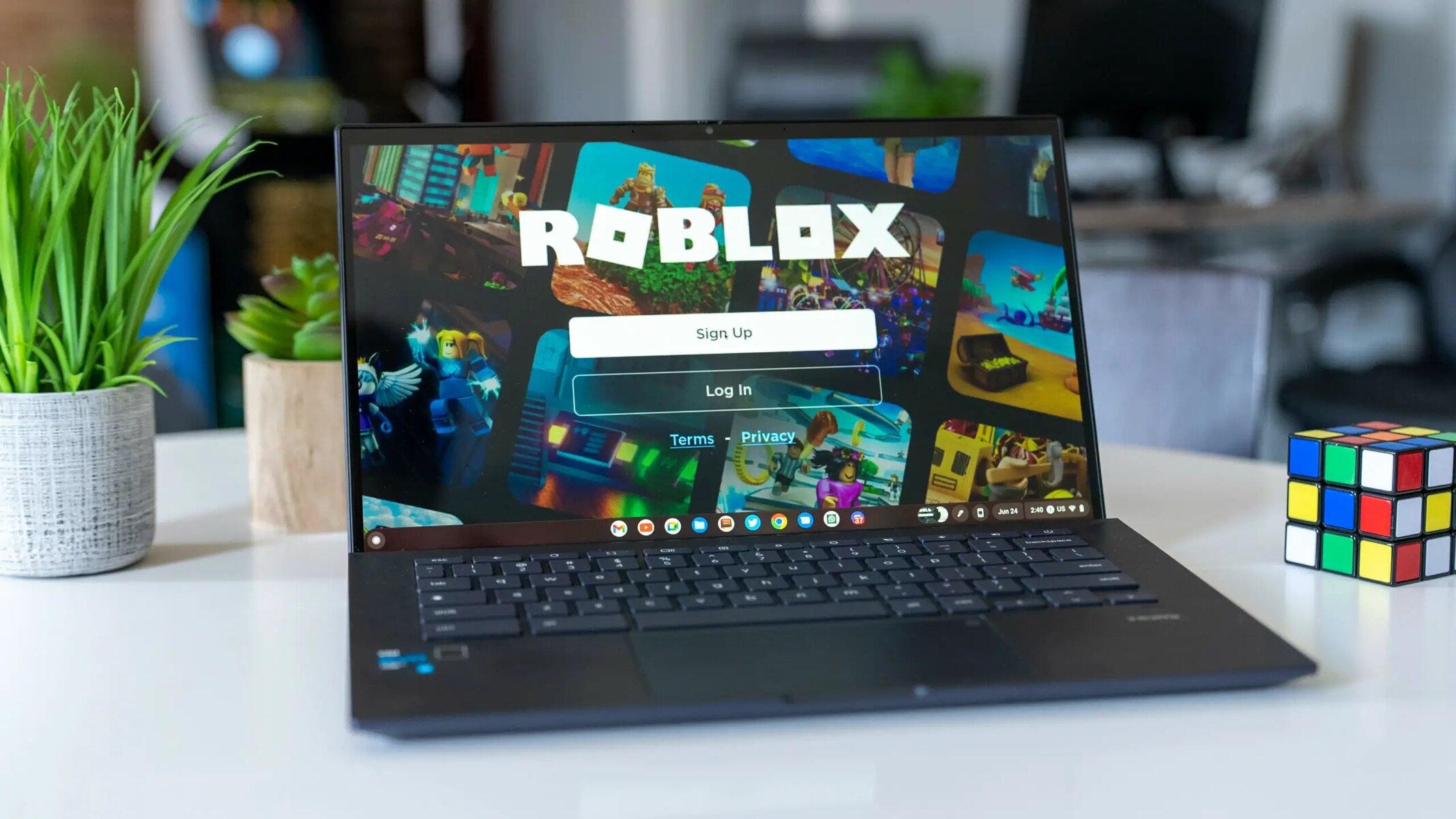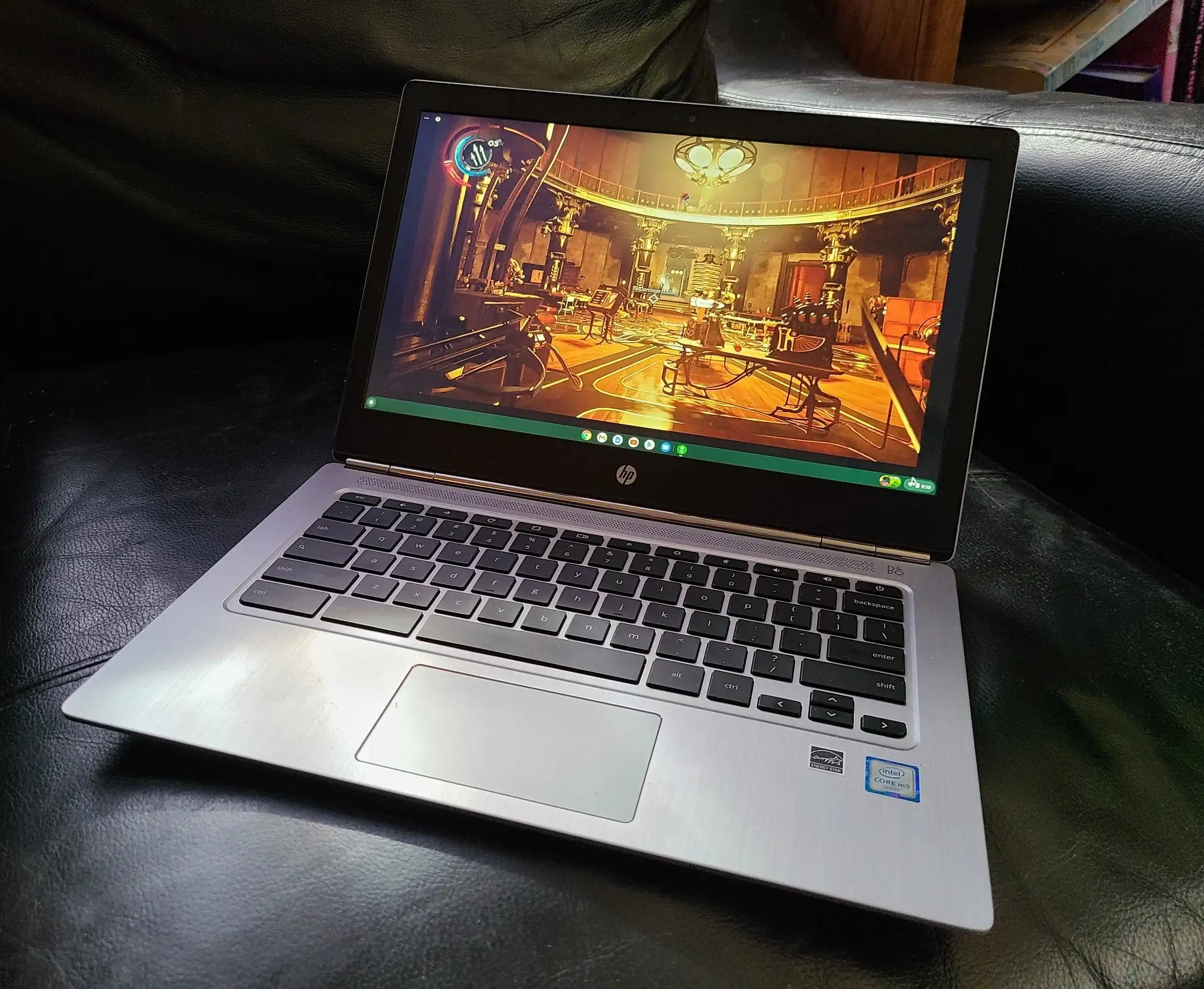Introduction
Welcome to the world of gaming on Chromebook! With the rising popularity of Chromebooks as versatile and lightweight devices, it’s no surprise that people are looking for ways to satisfy their gaming cravings on these machines. While Chrome OS was originally designed to primarily run web-based applications, recent updates have made it possible to play Android games on your Chromebook as well. Whether you’re a casual gamer or a hardcore enthusiast, this guide will walk you through the process of playing games on your Chromebook, from system requirements to troubleshooting common issues.
Before we dive into the details, it’s important to note that not all Chromebooks may support gaming. Chromebooks with Android app support and sufficient hardware capabilities are the ideal candidates for a smooth gaming experience. If your Chromebook meets the necessary requirements, you can unlock a world of endless entertainment with a wide range of Android games available on the Google Play Store.
Additionally, Chromebooks are perfect for playing web-based games directly from your browser. Many popular game platforms, such as Steam and HTML5 games, can be accessed via Chrome’s powerful web browser, providing a convenient and seamless gaming experience without the need for additional installations.
In this guide, we will explore the various methods of playing games on your Chromebook, including installing Android games, sideloading games, and playing web-based games. We will also discuss how to optimize your Chromebook’s performance for gaming and troubleshoot any issues that may arise along the way.
So, grab your Chromebook, get ready to have some fun, and let’s explore the exciting world of gaming on Chrome OS!
System Requirements
Before you start gaming on your Chromebook, it’s essential to ensure that your device meets the necessary system requirements. This will help ensure a smooth and enjoyable gaming experience without any performance issues or compatibility issues. While Chromebooks vary in specifications and capabilities, here are some general system requirements to consider:
- Operating System: Ensure that your Chromebook is running the latest version of Chrome OS. Some older models may not support the latest updates, so it’s important to check for compatibility.
- Processor: A faster processor will improve the performance of your games. Ideally, look for a Chromebook with at least a dual-core 2.0 GHz or higher processor.
- RAM: Random Access Memory (RAM) plays a crucial role in multitasking and running applications smoothly. Aim for a Chromebook with a minimum of 4GB RAM, although 8GB or more is recommended for a better gaming experience.
- Storage: While gaming doesn’t require a significant amount of storage, it’s best to have ample space for game installations and updates. Consider a Chromebook with at least 16GB of internal storage or more.
- Graphics: The graphics capability of your Chromebook can impact the visual quality and performance of games. Look for a device with integrated graphics or a dedicated graphics card for more demanding games.
- Screen Size: While many Chromebooks come with smaller screens, a larger display can enhance your gaming experience. Aim for a Chromebook with at least a 13-inch screen or above for a more immersive gaming experience.
- Battery Life: Gaming can be demanding on your device’s battery. It’s recommended to choose a Chromebook with a longer battery life to ensure uninterrupted gaming sessions.
Keep in mind that these are general guidelines, and specific game requirements may vary. It’s always a good idea to check the system requirements for the games you intend to play to ensure compatibility with your Chromebook.
Now that you’re aware of the system requirements, let’s move on to the exciting part: installing Android games on your Chromebook!
Installing Android Games
One of the easiest ways to enjoy gaming on your Chromebook is by installing Android games from the Google Play Store. Here’s how you can get started:
- Open the Google Play Store app on your Chromebook. If you don’t see the app, your Chromebook may not support Android apps. Ensure that your device is updated to the latest version of Chrome OS and that Android app support is enabled.
- Search for the game you want to install using the search bar or explore the different categories and recommendations.
- Select the game you want to install from the search results or the game’s page.
- Click on the “Install” button to begin the download and installation process. The size of the game and your internet speed will determine how long it takes to install.
- Once the game is installed, you can either launch it from the Play Store or find it in your app launcher.
- Follow any additional instructions or prompts, such as signing in with your account or granting necessary permissions.
It’s important to remember that not all Android games may be optimized for Chromebook’s display and controls. Some touch-based games may not work as smoothly on a device that primarily uses a keyboard and touchpad. However, many games adapt well to the Chromebook environment, providing an enjoyable gaming experience.
Furthermore, Chromebooks that support the use of a stylus can offer an enhanced gaming experience for certain games that utilize touch or drawing mechanics. If you have a compatible stylus, be sure to try it out with your favorite games!
Now that you have learned how to install Android games on your Chromebook, let’s explore another method of playing games: sideloading games.
Enabling Developer Mode
If you want to go beyond the limitations of the Google Play Store and install third-party Android games on your Chromebook, you’ll need to enable Developer Mode. Enabling Developer Mode allows you to sideload apps and games that are not officially approved or listed on the Play Store. Here’s how you can enable Developer Mode on your Chromebook:
- Access the Chromebook’s settings by clicking on the notification center in the lower-right corner of the screen, then selecting the gear icon to open the Settings menu.
- Scroll down and click on “About Chrome OS” or “About Chromebook”.
- Locate the “Build number” or “Version” section.
- Click on the build number or version rapidly seven times. You will see a message indicating that you are now a developer.
- Go back to the main settings page, and you will find a new section called “Developer options”.
- Click on “Developer options” and toggle the switch to enable Developer Mode.
- Follow the prompts and warnings that appear, as enabling Developer Mode will factory reset your Chromebook, deleting all local data.
Once you have enabled Developer Mode and your Chromebook has restarted, you can proceed with sideloading Android games. This method allows you to manually install APK files downloaded from external sources or shared by others.
It’s important to note that sideloading apps and games from unofficial sources can be risky. Make sure you only download trusted APK files from reliable sources to avoid malware or other security risks.
Now that you have enabled Developer Mode on your Chromebook, let’s move on to the next step: sideloading games on your device.
Sideloading Games
After enabling Developer Mode on your Chromebook, you can sideload Android games that are not available on the Google Play Store. Here’s a step-by-step guide on how to sideload games:
- Locate the APK file of the game you want to sideload. You can either download the APK file directly from a trusted source or transfer it from another device to your Chromebook.
- Open the file manager on your Chromebook and navigate to the folder where you saved the APK file.
- Double-click on the APK file to start the installation process.
- Follow the on-screen instructions and prompts provided during the installation. You may need to grant certain permissions or enable installation from unknown sources.
- Once the installation is complete, you can find the sideloaded game in your app launcher or use a third-party app such as ARC Welder to run the game.
Sideloading games gives you access to a wider range of games that may not be available on the Google Play Store. However, it’s important to exercise caution and only install APK files from trusted sources to avoid any potential security risks or malware.
Keep in mind that not all sideloaded games may work perfectly on a Chromebook due to differences in hardware capabilities and optimization. Some games may not be designed to run on a Chromebook’s keyboard and touchpad, so it’s best to check the compatibility and user reviews of the game beforehand.
Now that you know how to sideload games on your Chromebook, let’s explore another option for playing games: web-based games.
Playing Web Games
In addition to Android games, Chromebooks offer a wide variety of web-based games that can be played directly through your browser. These games are accessible through popular gaming platforms and websites, providing a convenient and hassle-free gaming experience. Here’s how you can get started with playing web games on your Chromebook:
- Launch the Chrome browser on your Chromebook.
- Visit popular gaming platforms such as Steam, Kongregate, or Armor Games, or explore websites that host HTML5 games.
- Browse through the available games and select the one you want to play.
- Click on the game to start playing directly in your browser. Some games may require additional plugins or extensions, so make sure to follow any instructions or prompts that appear.
Web-based games offer a wide range of genres and gameplay styles, including puzzle games, strategy games, action games, and more. Many of these games are designed to be lightweight and run smoothly on Chromebooks, making them a popular choice for gamers.
Moreover, web-based games often offer social and multiplayer features, allowing you to connect and compete with other players around the world. This adds an extra level of excitement and engagement to your gaming experience.
Keep in mind that web-based games require an active internet connection to play. Therefore, make sure you are connected to a stable and reliable Wi-Fi network before diving into your favorite web games.
Now that you know how to play web games on your Chromebook, let’s explore how to optimize your device’s performance for the best gaming experience.
Optimizing Chromebook Performance
To ensure the best gaming experience on your Chromebook, it’s important to optimize its performance. By following these tips, you can maximize your device’s capabilities and minimize any potential performance issues:
- Close Unnecessary Apps: Before starting a gaming session, close any unnecessary apps or browser tabs running in the background. This frees up system resources and ensures smoother gameplay.
- Update Chrome OS: Regularly check for and install updates for Chrome OS. Updates often include performance enhancements and bug fixes that can improve your gaming experience.
- Manage Storage: Keep your Chromebook’s storage organized by regularly deleting unnecessary files and applications. This helps maintain optimal performance and ensures you have enough storage space for game installations.
- Restart Regularly: Restarting your Chromebook can help clear temporary files and refresh system processes, resulting in improved performance.
- Adjust Power Settings: If you’re gaming on battery power, consider adjusting the power settings to prioritize performance over battery life. This can help provide a smoother gaming experience.
- Disable Extensions: Temporarily disable any unnecessary browser extensions that might be running in the background. Some extensions can consume system resources and impact gaming performance.
- Manage System Resources: Use the Chrome Task Manager to monitor and manage system resources. This allows you to prioritize resources for games and close any processes that may be causing performance issues.
Optimizing your Chromebook’s performance ensures that you can fully enjoy your gaming sessions without any lag or slowdowns. Remember, every Chromebook model may have its own unique set of optimization options or features, so explore your device’s settings and documentation for additional performance-enhancing options.
Now that you know how to optimize your Chromebook’s performance, let’s move on to troubleshooting common issues that you may encounter while gaming.
Troubleshooting Common Issues
While gaming on your Chromebook, you may encounter certain issues that can affect your gaming experience. Here are some common problems and troubleshooting steps to resolve them:
- Game Crashes: If a game crashes frequently or fails to launch, try closing other apps running in the background, updating the game to the latest version, or reinstalling the game. You can also check the game’s support forums or community for specific troubleshooting steps.
- Performance Lag: If you experience lag or performance issues, make sure no other resource-intensive applications are running simultaneously. Adjusting the quality settings within the game or optimizing your Chromebook’s performance settings can also help.
- Compatibility Issues: Some games may not be optimized for Chrome OS or may require specific hardware capabilities. Check the game’s system requirements and verify that your Chromebook meets them to ensure compatibility.
- Network Connectivity: If you experience connection issues while playing online games, check your internet connection and make sure it is stable. Restarting your router or connecting to a different network may resolve network-related issues.
- Audio or Graphic Glitches: If you encounter audio or graphic glitches, try updating your Chrome OS to the latest version and updating the game to the latest patch. Disabling any unnecessary browser extensions or restarting your Chromebook may also help resolve these issues.
- Control Compatibility: Certain games may not be optimized for Chromebook’s keyboard and touchpad controls, resulting in a subpar gaming experience. Consider using external controllers or checking if the game supports alternative control methods.
If you have tried the troubleshooting steps above and are still experiencing issues, it’s recommended to seek help from the game’s support team or consult the Chromebook community for further assistance. They may have specific solutions or workarounds for the particular game or issue you’re encountering.
Now that you are equipped with troubleshooting knowledge, you can overcome common gaming issues on your Chromebook and enjoy uninterrupted gaming sessions.
Conclusion
Congratulations! You’ve reached the end of our guide on playing games on your Chromebook. We have explored various methods, from installing Android games to sideloading and playing web-based games. You have also learned how to optimize your Chromebook’s performance and troubleshoot common gaming issues.
Gaming on a Chromebook opens up a world of entertainment and fun, whether you’re a casual gamer or a dedicated enthusiast. With the ever-growing library of games available on the Google Play Store and the vast array of web-based games accessible through your browser, there’s something for everyone to enjoy.
Remember to check your Chromebook’s system requirements before diving into gaming and ensure that your device is up to date with the latest Chrome OS updates. This will help ensure a smooth gaming experience with optimal performance.
If you encounter any challenges along the way, such as game crashes, performance lag, or compatibility issues, refer to the troubleshooting steps provided in this guide. Don’t hesitate to seek support from the game’s developers or the Chromebook community for additional assistance.
Now it’s time to unleash your gaming skills, embark on exciting adventures, and challenge yourself to new heights on your Chromebook. Get ready to immerse yourself in the world of gaming and have a fantastic time while doing so!







